#San Isidro Labrador
Explore tagged Tumblr posts
Text
Fiestas Patronales de San Isidro Labrador
El municipio de San Isidro festeja hoy lunes su santo patrono. Pero tiene previsto desarrollar diferentes actividades hasta fin de mes. El evento central será hoy lunes 15 de mayo, a partir de las 16, con el recorrido de la imagen del Santo por el casco histórico. Luego, a las 17:00, en la Catedral (avenida del Libertador 16200), tendrá lugar la Misa presidida por el obispo local, monseñor Oscar…

View On WordPress
4 notes
·
View notes
Text

THE DESCRIPTION OF SAINT ISIDORE THE LABORER The Patron of Farmers and Agriculture Feast Day: May 15
St. Isidore, the patron of farmers, was born at Madrid, Taifa of Toledo, circa 1070, of a poor family at the end of the 12th century. He was named after the famous bishop of Seville, and from an early age was employed as a laborer on a farm outside the city. He married a lovely girl, but after the early death of their son they agreed to live in continence. Isidore went to church every morning, prayed while working in the fields, and spent the holidays visiting the churches of Madrid.
One time, his fellow workers complained that his religious practices caused him to be late at work. In order test the truth of accusation, his master hid himself to watch. He noticed that Isidore did actually arrive late, but he also saw several angels assisting him.
Isidore's generosity to the poor was so great that he often reserved for himself only the scraps they left over. On a winter's day, while carrying a sack of corn to be ground, he saw a number of birds on the bare branches of a tree. He opened a sack and poured out half of its contents for them. When he reached the destination, the sack was still full and it produced double of the usual amount of flour.
Isidore died on May 15, 1130 at the age of 59. From that time, many miracles were worked through his intercession.
His wife, Maria Torribia, who survived him for several years, is venerated in Spain as 'Santa María de la Cabeza', because her head is often carried in procession in time of drought.
#random stuff#catholic#catholic saints#isidore the laborer#saint isidore#isidro de labrador#san isidro#san isidro labrador#farmers#agriculture
1 note
·
View note
Text
Ampliada hasta finales de abril la exposición «1622 o la canonización de cinco santos (San Isidro Labrador, San Francisco Javier, San Ignacio de Loyola, Santa Teresa de Jesús, San Felipe Neri)» que se muestra en la Biblioteca Central de la Universidad de Navarra
Se ha ampliado hasta finales de abril la exposición «1622 o la canonización de cinco santos (San Isidro Labrador, San Francisco Javier, San Ignacio de Loyola, Santa Teresa de Jesús, San Felipe Neri)», que se muestra en el hall de la Biblioteca Central de la Universidad de Navarra. Organizada por el Servicio de Bibliotecas de la Universidad de Navarra (Fondo Antiguo) y el Grupo de Investigación…
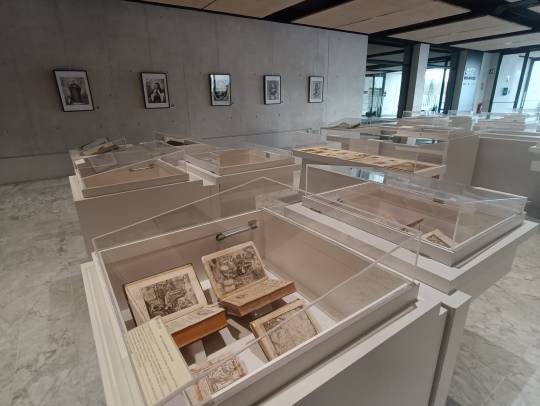
View On WordPress
#Canonizaciones de 1622#Carlos Mata Induráin#Exposición#Exposición virtual#Fondo Antiguo#Grupo de Investigación Siglo de Oro (GRISO)#Hagiografía#Inmaculada Pérez#María Calonge#San Felipe Neri#San Francisco Javier#San Ignacio de Loyola#San Isidro Labrador#Santa Teresa de Jesús#Santidad#Sara Satrústegui#Servicio de Bibliotecas de la Universidad de Navarra#Universidad de Navarra
0 notes
Text
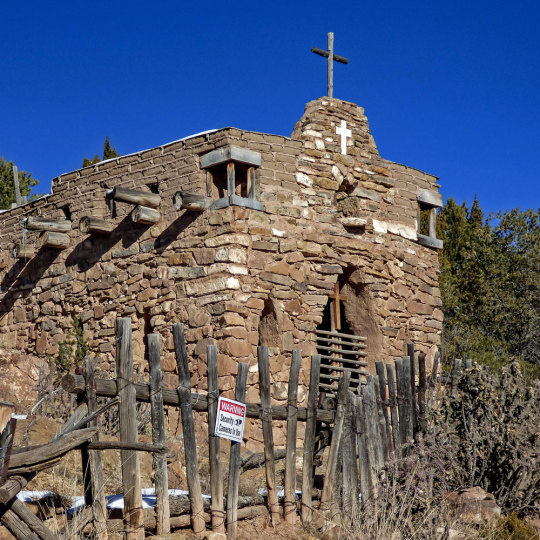

Built on a rock outcropping above Cerro Gordo Road in Santa Fe, La Capilla de San Ysidro Labrador honors San Isidro Labrador, the eleventh-century patron saint of farmers. The chapel was built by Lorenzo López in 1928, using stones from his property and mud from the acequia.
78 notes
·
View notes
Text

Iglesia de San Isidro Labrador Potosí, Táchira Venezuela.
19 notes
·
View notes
Text
Amnesty International: Water Defender Killed
On Saturday, September 14, environmental defender and coordinator of the Municipal Committee for the Defense of Common and Public Assets, Juan López, was murdered as he was leaving his work as a community and religious leader in the parish of San Isidro Labrador in the municipality of Tocoa, department of Colón, northern Honduras. According to public reports, Juan López was shot by an unidentified person on a motorcycle. We demand the Honduran authorities to ensure a prompt, thorough, and impartial investigation into the killing of Juan López, as well as other killings and attacks against the defenders of the Guapinol river, to refrain from using the justice system to harass them and to ensure their integral protection.
PLEASE TAKE ACTION AS SOON AS POSSIBLE UNTIL: November 14, 2024
Several communities, campesino groups, parishes, and local organizations in the municipality of Tocoa (department of Colón), North of Honduras, led by the Municipal Committee for the Defense of Common and Public Assets (Comité Municipal por la Defensa de los Bienes Comunes y Públicos, CMDBCP) have opposed the operating license issued to the mining company, Inversiones Los Pinares in the Carlos Escalera National Park, formerly known as Montaña de Botaderos, since 2015. On August 1, 2018, local residents set up the “Guapinol camp” to peacefully protest against the license and mining exploitation in the core zone of a protected area of the water sources on which they depend for their survival.
Members of the CMDBCP have faced at least two criminal proceedings since 2018 for defending the Guapinol and San Pedro Rivers of the impacts mining project. Aly and his brother, Reynaldo Dominguez, as well as Juan López, Leonel George, Marco Tulio Ramos, Eugenio Esquivel, and Adaly Cedillo spent some time in prison in 2019 along with other Guapinol River defenders for these proceedings. The same proceedings led to the unjust detention of eight defenders of the Guapinol river for more than two years solely for peacefully defending the right to clean water.
After rigorous analysis, Amnesty International determined that the case file shows multiple flaws in the investigation and declared them prisoners of conscience. Following a Supreme Court ruling citing violations of the right to due process, the eight defenders of the Guapinol river were released in February 2021. In a separate decision, in June 2022, this court annulled similarly unfounded criminal proceedings against Juan López, Leonel George, Reynaldo Domínguez, Marco Tulio Ramos, and Adaly Cedillo.
On January 7, 2023, Aly Magdaleno, Domínguez Ramos, and Jairo Bonilla Ayala were intercepted by armed assailants as they were returning home and shot and killed on the spot, according to their relatives.
On February 7, 2024, lawyers of the Guapinol defenders were notified that the prosecutor's office in Tocoa had appealed, in December 2022, a favorable resolution of the Supreme Court of Justice that annulled unfounded criminal proceedings against five Guapinol defenders: Juan López, Leonel George, Reynaldo Domínguez, Marco Tulio Ramos, and Adaly Cedillo. A sixth defender, Eugenio Esquivel, appears in the appeal although he is not part of the case in question.
Over the last five years, Amnesty International has been alerted on numerous deaths and other attacks against activists in Honduras, which is one of the deadliest countries in the world to be a human rights defender. Honduras still one of the deadliest countries in the world for land and environmental defenders. Despite the seriousness of the attacks on these defenders, Honduras has not yet signed the Escazú Agreement, the first environmental human rights treaty in Latin America and the Caribbean, which obliges signatory states to protect environmental defenders and entered into force on April 22, 2021.
3 notes
·
View notes
Text

RIBALTA, Francisco (1565-1628).
San Isidro Labrador (San Isidro Obrero).
Arte barroco. Óleo sobre lienzo. ESPAÑA. Valencia. Museo de Bellas Artes San Pío V.
5 notes
·
View notes
Text
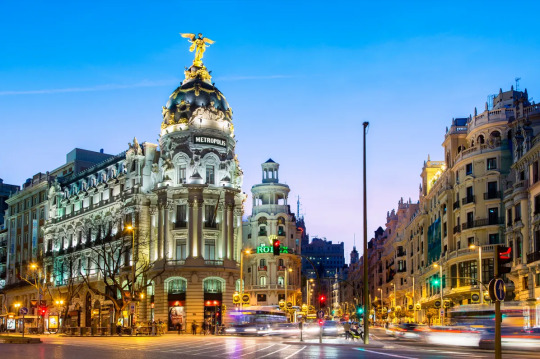
¡Hola, buenos días, humanidad! 🌍 ¡Feliz miércoles! 💪🌟🚀🏆🌈📈🌱🌞🎯🌺 Hoy os regalo una foto de Madrid, mi ciudad. Capital de España, es una ciudad alegre y cosmopolita que ofrece una rica mezcla de historia, cultura y modernidad.
Fundada en el siglo IX como un pequeño puesto fronterizo musulmán, Madrid ha crecido y evolucionado a lo largo de los siglos hasta convertirse en una de las ciudades más importantes de Europa.
Entre los lugares más emblemáticos de la ciudad se encuentran el Museo del Prado, uno de los museos de arte más importantes del mundo; el Palacio Real, la residencia oficial de la Familia Real Española; y la Puerta del Sol, el punto kilométrico cero de las carreteras radiales de España.
Hoy los madrileños estamos de fiesta por la celebración San Isidro Labrador, patrón de Madrid, que fue un labrador mozárabe que vivió en el siglo XII. Es conocido por su devoción religiosa, su humildad y sus milagros.
Vida consciente 🌟
Has pasado por mil cosas en tu vida que la gente ni siquiera sabe. Has experimentado cosas que te han sacudido, te han cambiado, te han roto, te han construido y te han enseñado a ser más fuerte de lo que alguna vez pensaste que tenías la capacidad de ser. Y eres quién eres por todo ello. Así que la próxima vez que alguien te juzgue basándose en una pequeña parte de lo que ven y cómo interpretan eso, recuerda quién eres, recuerda cuánto has superado y sonríe y sigue adelante porque no tienes absolutamente nada que demostrarle a nadie más. Ya has demostrado mucho a ti mismo al atravesar tormentas que la gente ni siquiera vio debido a la forma valiente en que las afrontaste.
3 notes
·
View notes
Text
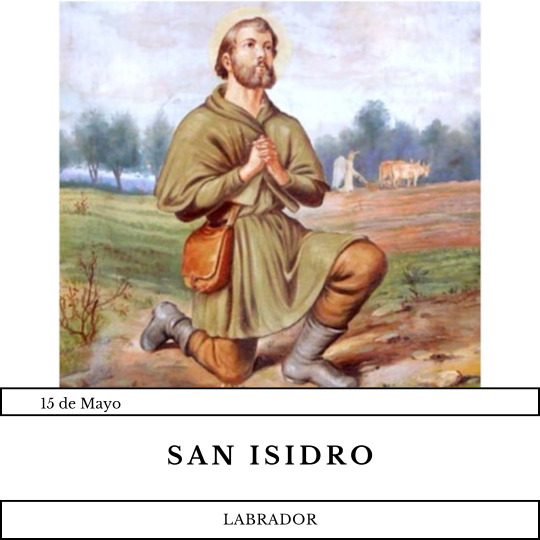
SAN ISIDRO, LABRADOR
Nació en Madrid cerca de 1070. Isidro se santificó rezando, trabajando en el campo y compartiendo sus bienes con los más pobres. No faltaron las envidias, pero las superó gracias a su esposa María. Vivió en la época de las grandes batallas medievales, es el patrón de los agricultores y campesinos.
Sus padres eran unos campesinos sumamente pobres que ni siquiera pudieron enviar a su hijo a la escuela. Pero en casa le enseñaron a tener temor a ofender a Dios y gran amor de caridad hacia el prójimo y un enorme aprecio por la oración y por la Santa Misa y la Comunión.
Huérfano y solo en el mundo cuando llegó a la edad de diez años Isidro se empleó como peón de campo, ayudando en la agricultura a Don Juan de Vargas un dueño de una finca, cerca de Madrid. Allí pasó muchos años de su existencia labrando las tierras, cultivando y cosechando.
Se casó con una sencilla campesina que también llegó a ser santa y ahora se llama Santa María de la Cabeza (no porque ese fuera su apellido, sino porque su cabeza es sacada en procesión en rogativas, cuando pasan muchos meses sin llover).
Isidro se levantaba muy de madrugada y nunca empezaba su día de trabajo sin haber asistido antes a la Santa Misa. Varios de sus compañeros muy envidiosos lo acusaron ante el patrón por "ausentismo" y abandono del trabajo. El señor Vargas se fue a observar el campo y notó que sí era cierto que Isidro llegaba una hora más tarde que los otros (en aquel tiempo se trabajaba de seis de la mañana a seis de la tarde) pero que mientras Isidro oía misa, un personaje invisible (quizá un ángel) le guaba sus bueyes y estos araban juiciosamente como si el propio campesino los estuviera dirigiendo.
Los mahometanos se apoderaron de Madrid y de sus alrededores y los buenos católicos tuvieron que salir huyendo. Isidro fue uno de los inmigrantes y sufrió por un buen tiempo lo que es irse a vivir donde nadie lo conoce a uno y donde es muy difícil conseguir empleo y confianza de las gentes. Pero sabía aquello que Dios ha prometido varias veces en la Biblia: "Yo nunca te abandonaré", y confió en Dios y fue ayudado por Dios.
Lo que ganaba como jornalero, Isidro lo distribuía en tres partes: una para el templo, otra para los pobres y otra para su familia (él, su esposa y su hijito). Y hasta para las avecillas tenía sus apartados. En pleno invierno cuando el suelo se cubría de nieve, Isidro esparcía granos de trigo por el camino para que las avecillas tuvieran con que alimentarse. Un día lo invitaron a un gran almuerzo. Él se llevó a varios mendigos a que almorzaran también. El invitador le dijo disgustado que solamente le podía dar almuerzo a él y no para los otros. Isidro repartió su almuerzo entre los mendigos y alcanzó para todos y sobró.
Los domingos los distribuía así: un buen rato en el templo rezando, asistiendo a misa y escuchando la Palabra de Dios. Otro buen rato visitando pobres y enfermos y por la tarde saliendo a pasear por los campos con su esposa y su hijito. Pero un día mientras ellos corrían por el campo, dejaron al niñito junto a un profundo pozo de sacar agua y en un movimiento brusco del chiquitín, la canasta donde estaba dio vuelta y cayó dentro del hoyo. Alcanzaron a ver esto los dos esposos y corrieron junto al pozo, pero este era muy profundo y no había cómo rescatar al hijo. Entonces se arrodillaron a rezar con toda fe y las aguas de aquel aljibe fueron subiendo y apareció la canasta con el niño y a este no le había sucedido ningún mal. No se cansaron nunca de dar gracias a Dios por tan admirable prodigio.
Volvió después a Madrid y se alquiló como obrero en una finca, pero los otros peones, llenos de envidia lo acusaron ante el dueño de que trabajaba menos que los demás por dedicarse a rezar y a ir al templo. El dueño le puso entonces como tarea a cada obrero cultivar una parcela de tierra. Y la de Isidro produjo el doble que las de los demás, porque Nuestro Señor le recompensaba su piedad y su generosidad.
En el año 1130 sintiendo que se iba a morir hizo humilde confesión de sus pecados y recomendando a sus familiares y amigos que tuvieran mucho amor a Dios y mucha caridad con el prójimo, murió santamente. A los 43 años de haber sido sepultado en 1163 sacaron del sepulcro su cadáver y estaba incorrupto, como si estuviera recién muerto. Las gentes consideraron esto como un milagro. Poco después el rey Felipe III se hallaba gravísimamente enfermo y los médicos dijeron que se moriría de aquella enfermedad. Entonces sacaron los restos de San Isidro del templo a donde los habían llevado cuando los trasladaron del cementerio. Y tan pronto como los restos salieron del templo, al rey se le fue la fiebre y al llegar junto a él los restos del santo se le fue por completo la enfermedad. A causa de esto el rey intercedió ante el Sumo Pontífice para que declarara santo al humilde labrador, y por este y otros muchos milagros, el Papa lo canonizó en el año 1622 junto con Santa Teresa, San Ignacio, San Francisco Javier y San Felipe Neri.
#evangelio#oracion#biblia#catolicos#iglesia#dios#gospel#catholic#mass#evangelio de hoy#sanisidro#sanisidrolabrador
3 notes
·
View notes
Text
San Isidro celebró sus Fiestas patronales en honor de San Isidro labrador
Más de 600 vecinos y vecinas sanisidrenses y de otros distritos acompañaron la tradicional procesión del Santo Patrono de San Isidro, San Isidro labrador. Tras la procesión el obispo diocesano, Mons. Oscar Ojea, presidió la Santa Misa en la catedral de San Isidro. Participó el intendente, Ramón Lanús. El obispo auxiliar Guillermo Caride (izq.) también acompañó al Santo y su esposa Como cada 15…

View On WordPress
0 notes
Text
San Isidro Labrador, poco mordedor.
Felices fiestas a todes mis compadres madrileñers. Dadle al chotis, pasadlo guapamén, cuidad unes de otres, odien a los ricos, protejan el agua como el tesoro que es y, recordad: la tierra para quien la trabaja.

8 notes
·
View notes
Text
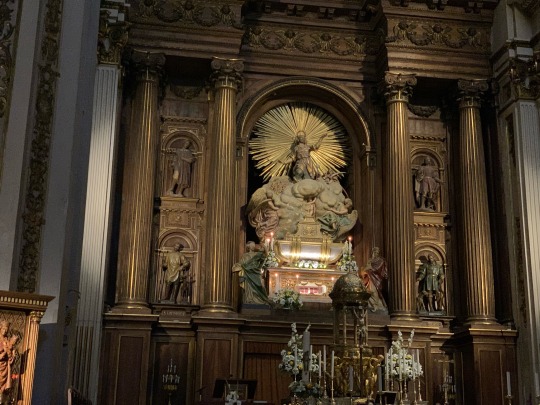
15 de mayo día de San Isidro Labrador, Patrón de Madrid.
Sus Reliquias están custodiadas en la Colegiata de San Isidro.
5 notes
·
View notes
Text
Al 80 por ciento de construcción el puente vehicular de Atlamajalcingo

CHILPANCINGO, Guerrero * Enero 27, 2025 ) CICAEG El director general de la Comisión de Infraestructura Carretera y Aeroportuaria del Estado de Guerrero (CICAEG), Martín Vega González, informó que

con una inversión de 12 millones de pesos se construye el puente vehicular Atlamajalcingo del Monte en la región de la Montaña. Explicó que estas acciones son parte del año de las obras que impulsa la gobernadora Evelyn Salgado Pineda para mejorar la infraestructura carretera en las ocho regiones del estado. Martín Vega explicó que el puente tendrá una longitud total de 30 metros, y beneficiará a más de 28,500 habitantes de las poblaciones de Atlamajalcingo del Monte, Tepecocatlán, Cuatzoquitengo, Plan de Guadalupe y San Isidro Labrador. Con la construcción del puente que lleva un avance del 80 por ciento, se proporcionará una mayor cobertura y comunicación en la zona, garantizando las necesidades y el suministro oportuno de bienes de consumo y la comercialización de productos agrícolas. Así como ayudará de manera importante a abatir los principales rezagos en materia de educación, salud, seguridad pública y bienestar social.



) acapulcopress.com Read the full article
#Atlamajalcingo#ComisióndeInfraestructuraCarreterayAeroportuariadelEstadodeGuerrero(CICAEG)#MartínVegaGonzález
0 notes
Text
conoce todos los eventos y exposiciones que tiene para ofrecerte Madrid en 2025

Madrid, la vibrante capital de España, es un destino que no solo encanta por su rica historia y cultura, sino también por su apabullante oferta de eventos y exposiciones. Durante todo el año, la ciudad se convierte en un epicentro de actividades culturales, artísticas y de entretenimiento, atrayendo tanto a locales como a turistas de todo el mundo. Si planeas visitar Madrid o simplemente quieres explorar lo que esta maravillosa ciudad tiene para ofrecer, aquí te presentamos un recorrido detallado por algunos de los eventos y exposiciones más destacados que no te puedes perder.
Eventos anuales destacados
Eventos en Madrid caracteriza por tener un calendario cultural repleto de eventos icónicos. Algunos de ellos se han convertido en tradiciones imperdibles que reflejan el espíritu de la ciudad y su gente.
Fiestas de San Isidro
Cada mes de mayo, Madrid celebra a su santo patrón, San Isidro Labrador, con una serie de eventos que combinan tradición y diversión. Las calles se llenan de chulapos y chulapas, y se organizan conciertos al aire libre, bailes tradicionales y ferias gastronómicas donde podrás degustar rosquillas y limonada al estilo madrileño. Los parques, como la pradera de San Isidro, se convierten en el escenario principal de estas festividades.
Carnaval de Madrid
El Carnaval es otra celebración vibrante que toma lugar en febrero. Desfiles, disfraces, música y actividades familiares se despliegan por toda la ciudad. Los barrios de Madrid compiten con coloridos espectáculos que culminan con el tradicional "Entierro de la Sardina".
Semana del Orgullo LGBTQ+
Madrid también es conocida por ser una de las capitales más inclusivas y abiertas del mundo, y su Semana del Orgullo LGBTQ+ en julio es una prueba de ello. Chueca, el barrio LGBTQ+ por excelencia, se llena de vida con desfiles, conciertos y fiestas al aire libre. Este evento atrae a miles de visitantes internacionales cada año y promueve la diversidad y la igualdad.
Navidad en Madrid
La Navidad transforma Exposiciones en Madrid un lugar mágico. Desde finales de noviembre hasta principios de enero, la ciudad se ilumina con decoraciones navideñas, mercadillos en plazas icónicas como la Plaza Mayor y espectáculos de luces por toda la ciudad. Además, el tradicional desfile de los Reyes Magos el 5 de enero es un evento familiar que no puedes perderte.
Exposiciones de arte y cultura
Madrid también es hogar de algunos de los museos más importantes del mundo y alberga exposiciones temporales que deleitan a los amantes del arte y la cultura.
Museo del Prado
El Museo del Prado es una visita obligada para cualquier amante del arte. Aunque su colección permanente incluye obras de maestros como Velázquez, Goya y El Bosco, el museo también organiza exposiciones temporales de gran relevancia. Estas exposiciones suelen centrarse en temas específicos o artistas internacionales, ofreciendo siempre una experiencia única.
Museo Reina Sofía
Famoso por albergar el "Guernica" de Picasso, el Museo Reina Sofía es un lugar donde el arte moderno y contemporáneo se encuentran. Sus exposiciones temporales suelen incluir obras de artistas emergentes y consolidados, abarcando una variedad de disciplinas como la pintura, la escultura y el videoarte.
Museo Thyssen-Bornemisza
Otro de los tesoros de Madrid es el Museo Thyssen-Bornemisza, que complementa la oferta del Prado y el Reina Sofía. Este museo suele presentar exposiciones temporales que exploran movimientos artísticos como el impresionismo, el expresionismo y el arte pop.
CaixaForum Madrid
Ubicado en un edificio espectacular con un jardín vertical, el CaixaForum es conocido por sus exposiciones interdisciplinarias que combinan arte, ciencia y cultura. Desde muestras sobre civilizaciones antiguas hasta exploraciones de temas actuales como la sostenibilidad, siempre hay algo interesante que descubrir aquí.
Ferias y eventos internacionales
Madrid también es sede de importantes ferias internacionales que atraen a profesionales y entusiastas de diferentes sectores.
FITUR (Feria Internacional de Turismo)
Cada enero, Madrid se convierte en el punto de encuentro de la industria turística global con FITUR. Esta feria, una de las más grandes del mundo, es el lugar ideal para descubrir nuevas tendencias en turismo y explorar destinos de todos los continentes.
ARCOmadrid
ARCOmadrid es una de las ferias de arte contemporáneo más importantes de Europa. Celebrada en febrero, este evento reúne a galerías, coleccionistas y artistas de todo el mundo, ofreciendo una plataforma para el arte más innovador y provocador.
Madrid Fashion Week
La moda también tiene su espacio en Madrid con la Madrid Fashion Week, que se celebra dos veces al año. Diseñadores españoles e internacionales presentan sus colecciones en un evento que combina creatividad y elegancia.
Festival Internacional de Cine de Madrid
El cine también tiene un lugar destacado en la agenda cultural de la ciudad. Este festival, que se celebra en noviembre, proyecta películas de todo el mundo y organiza talleres y charlas con cineastas reconocidos.
Teatro y música
Madrid también es un paraíso para los amantes del teatro y la música en vivo.
Gran Vía: el Broadway madrileño
La Gran Vía es conocida como el Broadway de Madrid por su amplia oferta de musicales y espectáculos teatrales. Desde producciones internacionales como "El Rey León" hasta obras originales en español, hay opciones para todos los gustos.
Festivales de música
Madrid acoge varios festivales de música a lo largo del año, como el Mad Cool Festival, que trae a artistas internacionales de rock, pop y música electrónica, o el Festival de Jazz de Madrid, que ofrece actuaciones en teatros y espacios al aire libre.
Mercados y ferias locales
Si prefieres un ambiente más relajado, los mercados y ferias de Madrid también ofrecen experiencias únicas.
El Rastro
El Rastro es el mercadillo más famoso de Madrid y se celebra todos los domingos en el barrio de La Latina. Aquí encontrarás antigüedades, artesanías y una energía vibrante que refleja el espíritu madrileño.
Mercado de Motores
Este mercado mensual combina antigüedades, diseño moderno y gastronomía en un entorno único: el Museo del Ferrocarril. Es el lugar perfecto para comprar regalos únicos o disfrutar de un día relajado con amigos.
Conclusión
Madrid es una ciudad que nunca duerme y siempre tiene algo que ofrecer. Su variedad de eventos y exposiciones asegura que haya algo para todos, desde los amantes del arte y la música hasta los entusiastas de la moda y la gastronomía. Ya sea que planees una visita corta o te quedes a largo plazo, sumergirte en la oferta cultural de Madrid es una experiencia inolvidable. Así que no lo pienses más, ¡ven a Madrid y descubre todo lo que esta fascinante ciudad tiene preparado para ti!
0 notes
Text
Enchanting Siquijor: The Island of Magic and Wonder
Known for its mystical allure and breathtaking beauty, Siquijor is an island that beckons travelers with its unique charm. Nestled in the heart of the Philippines, this tropical paradise is more than just pristine beaches and lush forests—it’s a place steeped in folklore, spirituality, and adventure.
1. A Glimpse Into Siquijor’s Mystical Heritage
Siquijor is often called the “Island of Fire,” a name inspired by the glow of fireflies that once lit up its night skies. Historically, it has been shrouded in mystery, with tales of healing rituals, magic potions, and sorcery passed down through generations.
This enchanting reputation isn’t just a relic of the past. Visitors today can witness local healers performing ancient rituals, especially during the island’s Healing Festival. It’s a chance to connect with Siquijor’s unique spiritual culture and learn about its rich traditions.
2. Natural Wonders That Take Your Breath Away
Beyond its mystical allure, Siquijor boasts stunning natural attractions that captivate the soul. One must-visit destination is the Cambugahay Falls, a series of cascading turquoise waterfalls surrounded by lush greenery. The refreshing waters invite you to take a dip or swing on a rope like a true islander.
For beach lovers, Salagdoong Beach offers crystal-clear waters and thrilling cliff-diving spots. Meanwhile, the serene shores of Paliton Beach are perfect for those who crave tranquility. Siquijor’s natural wonders truly make it a paradise for every kind of traveler.
3. Exploring Siquijor’s Enchanting Caves
Siquijor’s underground treasures are as magical as its surface. Cantabon Cave is a must-explore site, known for its dramatic stalactites and stalagmites. Equipped with a guide and flashlight, you can traverse its narrow passages and discover underground pools and rock formations.
These caves aren’t just geological wonders—they’re also tied to local folklore. Stories of hidden treasures and supernatural beings add an air of mystery to your exploration, making the experience even more thrilling.
4. Siquijor’s Flavorful Culinary Scene
No trip to Siquijor is complete without indulging in its local cuisine. The island’s dishes reflect its rich cultural heritage, blending flavors from the Philippines and beyond. Don’t miss trying kinilaw, a Filipino ceviche made with fresh fish, vinegar, and spices, which perfectly complements the tropical vibe.
Siquijor’s dining spots range from quaint roadside eateries to beachfront restaurants offering freshly caught seafood. Pair your meal with a glass of tuba, a locally brewed coconut wine, to complete the island experience.
5. A Journey Through Siquijor’s Spiritual Sites
Siquijor is home to many historical and spiritual landmarks that showcase its unique character. The San Isidro Labrador Church and Convent, built in 1884, is a testament to the island’s colonial history and religious devotion.
Another must-visit site is the Balete Tree, a massive, centuries-old tree believed to have mystical properties. Beneath it lies a natural spring where fish spa therapy offers a quirky yet relaxing experience.
0 notes
Text
Borja Jiménez indulta un toro en su debut en Latacunga
Borja Jiménez ha sellado una de las faenas de su temporada esta tarde en la segunda corrida de la Feria de Latacunga, en la que ha indultado al sexto toro del hierro de Ortuño tras una obra de cante grande especialmente al natural. Y todo cuando comenzó a diluviar sobre el ruedo de la plaza «San Isidro Labrador» en el sexto toro de la que era la corrida del debut de Borja Jiménez en el país. En…

View On WordPress
0 notes